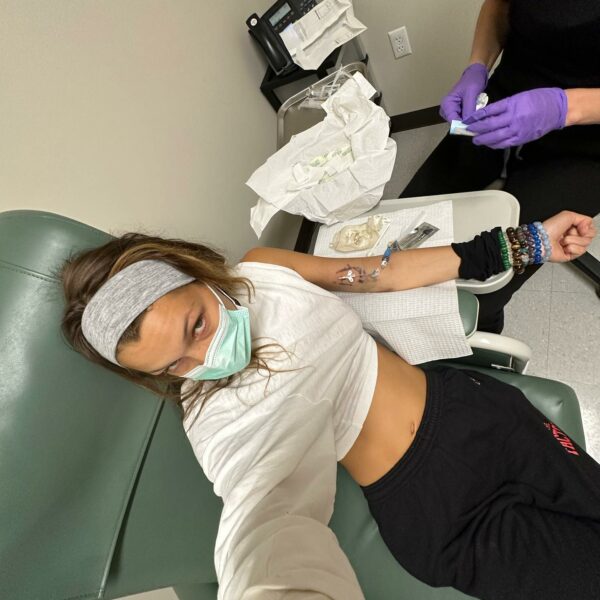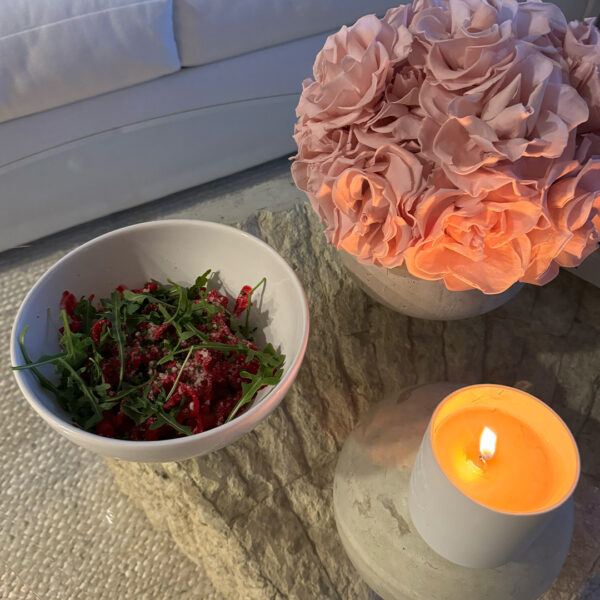Antioxidants are our number one crusaders against all kinds of stress. As the name suggests, they prevent compounds from oxidizing. Picture a freshly sliced apple or avocado. After a bit of time in the open air, that crisp and juicy, or supple and green, flesh begins to brown and wilt. Metal rusts, copper turns green. Oxidation effectively and swiftly gives a patina of age to all organic materials, including our bodies, from the inside out.
Science says that antioxidants are compounds that absorb oxygen, specifically in activated states, aka free radicals. Interestingly, our body creates free radicals, and a balance between them and antioxidants is necessary for proper physiological function, but that balance is very minimal on the free radical side.
An essay in the Pharmacognosy Review states that “if free radicals overwhelm the body’s ability to regulate them, a condition known as oxidative stress ensues.” That is the stress we want to avoid. Oxidative stress contributes to the loss of vitality and function of our cells. At high levels, oxidative stress damages molecules and even causes cell death, which is dangerous for a number of reasons.
When we think of antioxidants, we usually zero in on skin health, and trust—that is definitely true. However, our cognitive health is at major risk when we are overloaded with free radicals or suffering from oxidative stress. Our brain cells require a significant amount of oxygen to properly function, let alone thrive.
When free radicals ravage our brain cells, we lose them, rapidly. This puts us at risk of neurodegenerative diseases, like dementia, Parkinson’s, and Alzheimer’s. Our brain needs this clean oxygen to do its daily detox of metabolic waste, just like the rest of our body.
Not only do brain cells die from lack of oxygen, but when our metabolic detoxification system is compromised, we run the risk of toxic build-up—plaque-like substances tied to these diseases, especially Alzheimer’s. Antioxidants help to prevent this toxic buildup, letting our brains detox as programmed so that we can think and recall clearly, and for as long as possible.
Oxidative stress also leads to chronic inflammation, and vice versa. Immune cells known as macrophages actually produce free radicals inside the body when fighting off foreign invaders. These free radicals damage healthy cells, causing inflammation.
This is a normal process and isn’t something to worry about on its own. However, when we are overloaded with oxidative stress from the environment, processed foods, hydrogenated oils, chemicals, and more, it can trigger even more free radicals, creating a chronic cycle of inflammation, like a feedback loop.
Chronic inflammation is dangerous because it can lead to serious conditions like diabetes, arthritis, cardiovascular and autoimmune diseases, and even cancer. When we overproduce free radicals, they interact with our cell membrane proteins and fats, actually changing and damaging our DNA and its function, permanently. Antioxidants are our safety measure to prevent this damage from occurring in the first place. Think of them as DNA insurance.
While the health of our brain and DNA is like, a pretty big deal, the beauty benefits of antioxidants are the most well known. Because oxidative stress and free radicals damage our cells, while we might develop diseases and neurodegenerative disorders later in life, we will see the damage much sooner on our skin. Free radicals are the biggest culprit of premature aging.
Because our skin is constantly exposed to the elements, it’s not just what we eat that causes extrinsic skin aging (although that’s a big part—think processed foods, hydrogenated oils, pesticides, dyes, cigarettes, alcohol, and more). We also need to concern ourselves with the effects of the sun, pollution, and even psychological stress.
All of these wreak havoc on our cells by reacting with their oxygen, causing damage preventing nutrients from reaching our cells. We will see sagging, discoloration, dehydration, wrinkles, weight gain, and more if we don’t bulk up our antioxidant load.
So how do we be mindful about getting antioxidants in? First of all, we can cut back on fast food or prepackaged food, as hydrogenated oils are super inflammatory and release a ton of toxic free radicals in the body, and are a big component of junk foods with a long shelf life.
We should always, always wear sunscreen, avoid smoking, and avoid drinking in excess. Hydrating is key, but the easiest way to make sure we are eating tons of antioxidant-rich foods is to look for color. Bright purple, yellow, orange, red, and green plants are loaded with nutrients but, above all, antioxidants. The redder and the juicier, the better. And while we want to avoid binge drinking on the reg, red wine has some antioxidant benefits as well. Balance, baby.
The content provided in this article is provided for information purposes only and is not a substitute for professional advice and consultation, including professional medical advice and consultation; it is provided with the understanding that Poosh, LLC (“Poosh”) is not engaged in the provision or rendering of medical advice or services. You understand and agree that Poosh shall not be liable for any claim, loss, or damage arising out of the use of, or reliance upon any content or information in the article.
Up next, be the first to know our weekly content and sign up for our Poosh newsletter.




































